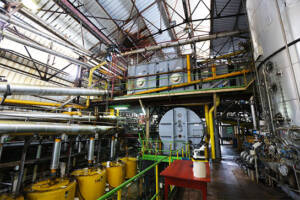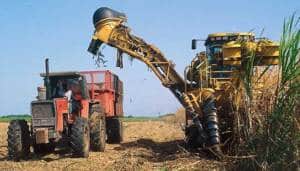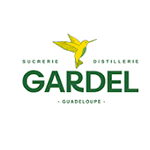
Founded in 1870, Gardel is the last operational sugar factory in mainland Guadeloupe, managing 1,000 hectares of sugarcane plantations across four sites. As the leading industrial agri-food employer in the region, it works with nearly 2,600 growers, cutters, machine operators, mill operators, evaporators, cooks, and packaging operators. Located in the heart of the Grande-Terre sugarcane basin, Gardel produces over 50,000 tons of sugarcane annually, processing nearly 80% of Guadeloupe’s sugarcane.
The factory directly contributes to the production of 10% of Guadeloupe’s renewable energy. Each year, millions of euros are invested to modernize the site, develop innovative practices, and maintain assets and infrastructure. The CMMS has become an integral part of the company’s overall strategy, especially for managing direct labor (DL) and expenses. Additionally, the Maintenance department has positioned itself at the core of the company-wide CMMS acclimation effort.
Initially, an underutilized CMMS
In 2014, the CMMS was used as a tool for managing store issues, but was never fully utilized functionally due to a lack of method knowledge and high turnover.
In 2019, the decision was made to deploy the application across all activities, particularly to cover the factory’s equipment and sugar packaging. The management aimed to unify methods across all activities through a CMMS capable of producing work order histories and cost reports.
Maintenance activities vary with the seasons

Specific CMMS objectives
Five clear objectives were defined by management upon the arrival of Jorge Leitao, Maintenance and New Works Manager:
- Establishment of an internal CMMS team with a structure to implement
- Training on the CMMS solution
- Development of connectors
- Development of expertise
- Integration of planning
Reducing downtime: a priority challenge
 The main challenge for maintenance is straightforward: during the sugar campaign, the factory operates six days a week. Therefore, the technical downtime rate—which includes more than just breakdowns—must be kept as low as possible to avoid extending the campaign duration, thereby controlling labor costs and preventing bottlenecks.
The main challenge for maintenance is straightforward: during the sugar campaign, the factory operates six days a week. Therefore, the technical downtime rate—which includes more than just breakdowns—must be kept as low as possible to avoid extending the campaign duration, thereby controlling labor costs and preventing bottlenecks.
We are currently adding hierarchies to the CMMS. There is a need for more detailed work management and addressing preventive maintenance and work planning,” explains Mr. Leitao.
A gradual CMMS deployment
The CMMS was first deployed within the factory. In the Maintenance department, two employees—CMMS reference persons—were trained and are also responsible for methods. They ensure that all maintenance teams use all CMMS functionalities.
They close work orders by ensuring proper entry practices and checking data consistency. Their role is to streamline and organize maintenance operations to provide support to production teams.
A functional scope around work order and asset tracking
A test base was established. The CMMS software is primarily used for tracking work orders and assets, planning, and managing teams. This includes handling work requests, managing histories through work orders, and defining preventive maintenance, all via fixed stations.
The Maintenance department utilizes work order management, preventive maintenance management, and work requests. The planning aspect will be integrated in the medium term. Each work order will be personalized and linked with human resources. There will be a connector to the internal ERP for all ordered services.
Tracking maintenance costs and labor
In the CMMS database, about 300 assets are referenced. Gardel has 20 licenses and 50 installed stations. The goal was to familiarize all personnel (managers, supervisors, technical agents) with the CMMS from the start despite varying levels of familiarity. They can create, update work orders, and supply spare parts needs,” explains Mr. Leitao.
As a result, maintenance has a comprehensive view of the time spent in direct labor, parts issued from the store, and orders placed on a specific asset.
A CMMS must meet real field needs

Now, the staff’s CMMS culture fully supports the company’s strategy
In implementing this project, we were fortunate to deal with a single point of contact. This allowed us to develop a quality relationship, which is a real differentiating factor.”
